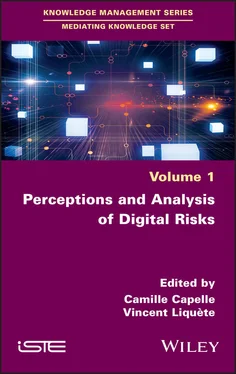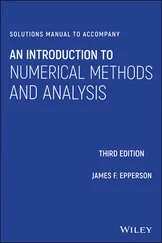For the educator, risk is also linked to the illicit use of information by students, in particular, the use of information that falls under law (law on the freedom of the press of 1881, law of July 13, 1990, known as the Gayssot law, prohibiting the dissemination of information of a revisionist, racist or sexist nature, or that promotes intolerance, for example). Many other uses can be problematic, such as disrespecting others, the privacy of teachers, education staff or other students. So-called “cyberbullying” situations via Web 2.0 tools are also problems that educators have to deal with (messages or video broadcasting via personalized and live channels on Snapchat or Periscope, for example). The digital practices of young people are all the more complex as they mix creativity and skills development, intimacy and self-exposure. What these multidisciplinary works have in common is that they seek to identify what digital technology does to the individual and to society in different contexts (educational, professional, political, etc.). The objective of this book is to compare the discourses on risk with the practices and representations of the actors in different professional fields and in the educational field, and subsequently, to explain their stakes in a digital context.
Our assumption is that individuals are armed with resilience 17in a changing world. The perception of digital risks can be a resource or a lever to develop a critical culture in a digital context 18. The contributions in this book present the means we have today to move from risk perception to risk information, from information to knowledge, and from knowledge to action 19. They will be of particular interest to teachers, trainers, mediators, information and media professionals.
The book is divided into three sections. The first section deals with the perception of risks in education and shows how the Internet currently constitutes an ecosystem in which the relationship between the teacher and their students is inevitably positioned.
Chapter 1shows the impact of alarmist discourses on educational practices through a study on the representations of digital risks among young teachers. These discourses seem to have an important resonance with teachers when they start their career and can dissuade them from implementing any digital practice at school with students.
Chapter 2focuses on adolescents’ perceptions of fake news. The study highlights variations in reflexivity towards critical evaluation of sources and disinformation across different age groups of students.
Chapter 3aims to better understand the pedagogical positions and choices of teachers, particularly in the area of Media and Information Literacy. Based on a survey conducted among teachers, the representations and non-formal practices identified lead the author to advocate for a cultural approach to digital education in professional training.
The second section deals with informational risks, as well as economic and social risks in professional environments. It focuses on the practices used to deal with these situations.
In Chapter 4, the authors look at information risk from the point of view of business leaders. They show that this notion is broader than digital or computer risk, which is restricted to digital media. The risks mentioned by managers in the context of their security policy include many informational risks linked to other media.
Chapter 5highlights the difficulties faced by organizations in Cameroon in dealing with the risks of scams and fraud in the use of cell phones by the population. Despite attempts at prevention by institutional organizations and cell phone operators, users suffer from an information deficit and the lack of means of action is not conducive to optimal mediation of these risks.
The third section looks back at the practices and mediations around digital risks in education. In particular, it examines the contribution of Media and Information Literacy, as implemented in schools in France.
Chapter 6shows that the notion of risk is often the starting point for pedagogical practices concerning digital uses and appears to be deeply rooted in the teachers’ vision of information culture. Although school learning practices are still quite far removed from the private sphere, we can see that teachers in the field are concerned with developing knowledge in students that they can transfer from one context of use to another.
Finally, Chapter 7compares the discourse of teachers in primary education with institutional texts concerning Media and Information Literacy. This comparison shows that the development of digital culture advocated in institutional texts remains a vague subject for primary school teachers. Beyond the operational approach to the use of digital tools, it is confirmed that primary school teachers lack training in the cultural approach to the web and its media.
1 Introduction written by Camille CAPELLE.
2 1 Lardellier, P. and Moatti, D. (2014). Les ados pris dans la Toile : des cyberaddictions aux techno-dépendances. Le Manuscrit, Paris.
3 2 Carr, N.G. (2011). Internet rend-il bête ? Robert Laffont, Paris.
4 3 Desmurget, M. (2019). La fabrique du crétin digital : les dangers des écrans pour nos enfants. Le Seuil, Paris.
5 4 Beck, U. (2008). La Société du risque : sur la voie d’une modernité. Flammarion, Paris.
6 5 Peretti-Watel, P. (2010). La société du risque. La Découverte, Paris.
7 6 Rouvroy, A. (2014). Des données sans personne : le fétichisme de la donnée à caractère personnel à l’épreuve de l’idéologie des Big Data. Étude annuelle du Conseil d’État : le numérique et les droits et libertés fondamentaux, La Documentation française, Paris.
8 7 Du Manoir de Juaye, T. (2014). Le risque informationnel au filtre du droit. Documentaliste – Sciences de l’Information, 51(3), 37–40.
9 8 Tricot, A. (1998). Charge cognitive et apprentissage : une présentation des travaux de John Sweller. Revue de Psychologie de l’Éducation, 3, 37–64.
10 9 Blaya, C. (2015). Les jeunes et les prises de risque sur Internet. Neuropsychiatrie de l’enfance et de l’adolescence, 63(8), 518–523.
11 10 Robert, P. and Pinède, N. (2012). Le document numérique : un nouvel équipement politique de la mémoire sociale ? Communication et organisation, 42, 191–202.
12 11 Serres, A. (2012). Dans le labyrinthe : évaluer l’information sur internet. C&F, Caen.
13 12 Pariser, E. (2011). The Filter Bubble: How the New Personalized Web is Changing What We Read and How We Think. Penguin, London.
14 13 Dioni, C. (op. cit).
15 14 Jehel, S. and Saemmer, A. (2017). Pour une approche de l’éducation critique aux médias par le décryptage des logiques politiques, économiques, idéologiques et éditoriales du numérique. tic&société, 11(1), 47-83.
16 15 Plantard, P. (2011). Pour en finir avec la fracture numérique. FYP Editions, Limoges.
17 16 Jehel, S. (2011). Contenus médiatiques à risque et construction identitaire des préadolescents. Sociétés et jeunesses en difficulté. Revue pluridisciplinaire de recherche, 11.
18 17 Tisseron, S. (2013). Résiliences : ambiguïtés et espoirs. Annales des Mines-Responsabilité et environnement. ESKA, 17–21.
19 18 Capelle, C., Cordier, A., Lehmans, A. (2018). Usages numériques en éducation : l’influence de la perception des risques par les enseignants. Revue française des sciences de l’information et de la communication, 15.
20 19 Liquète, V. (2011). Des pratiques d’information à la construction de connaissances en contexte : de l’analyse à la modélisation SEPICRI. University of Rouen, Rouen.
PART 1 Risk Perceptions, Education and Learning
1
Digital Risks: An Obstacle or a Lever for Education?
Читать дальше












